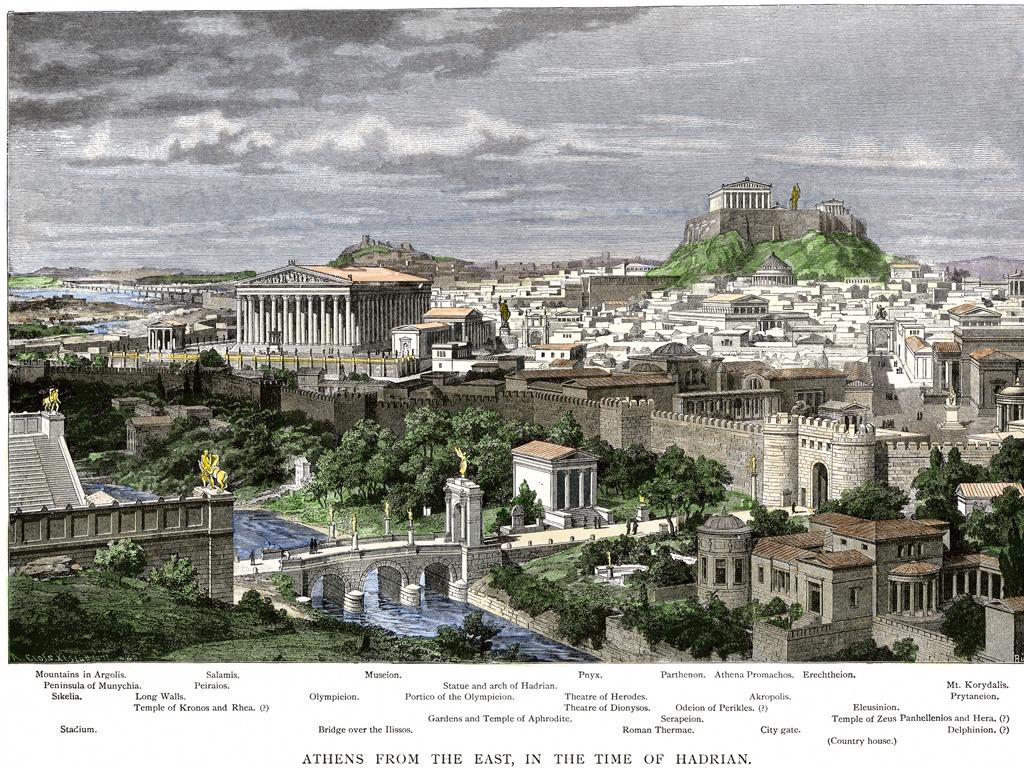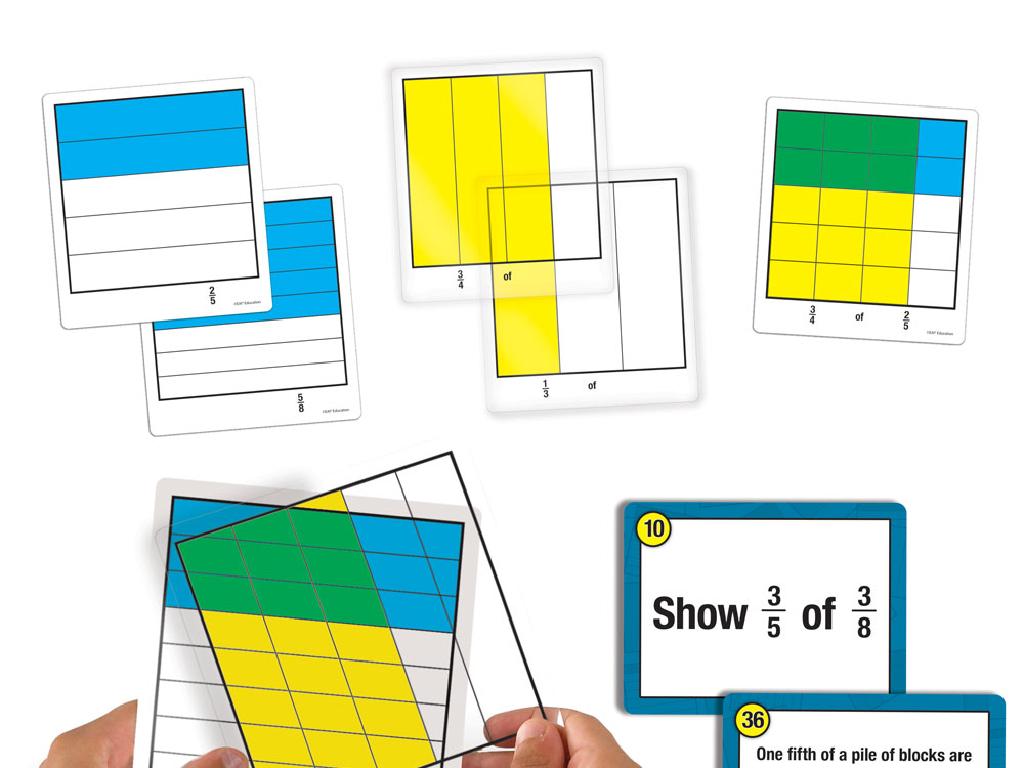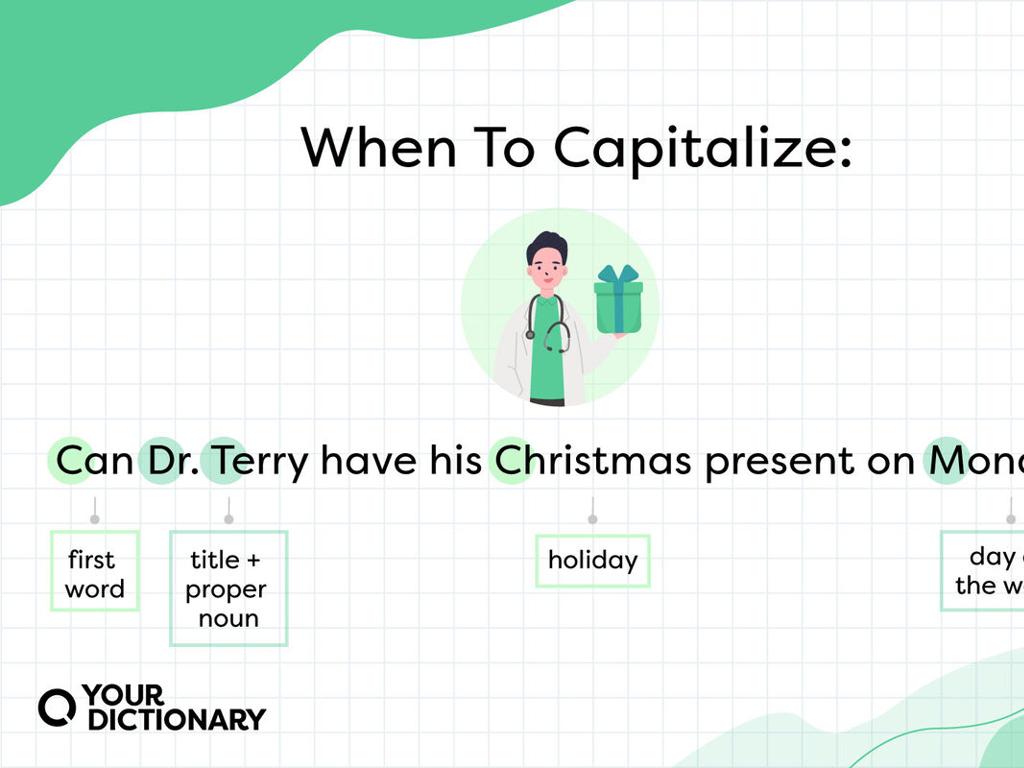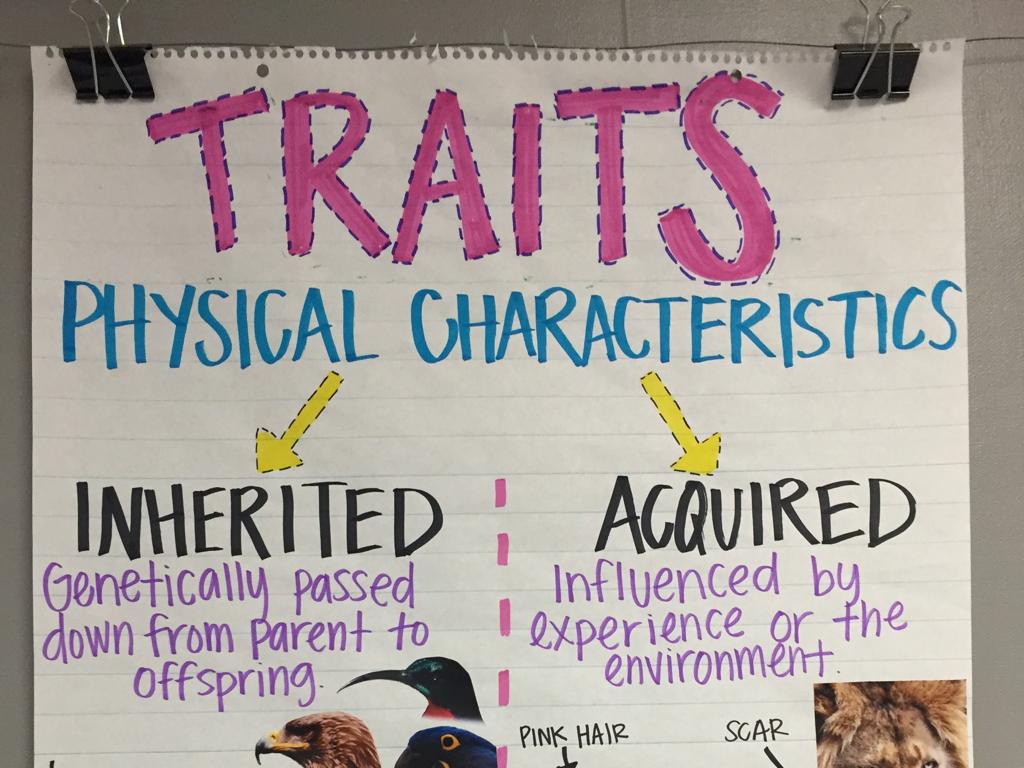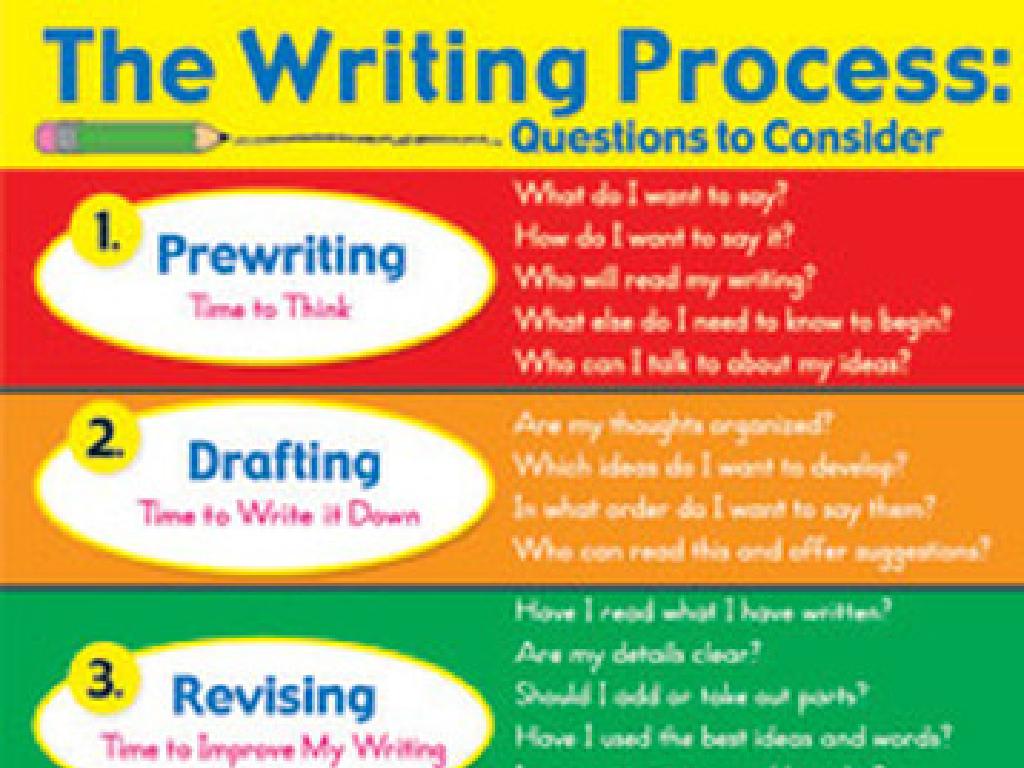Change-Of-State Diagrams: Melting, Freezing, Vaporizing, And Condensing
Subject: Science
Grade: Fifth grade
Topic: Heat And Thermal Energy
Please LOG IN to download the presentation. Access is available to registered users only.
View More Content
Exploring Heat and Thermal Energy
– Heat: A form of energy
– Heat makes things warmer and can change their state, like ice melting.
– Thermal energy explained
– Thermal energy is the total energy of moving particles in a substance.
– Heat in our daily lives
– Cooking food, sun warming the earth, and melting snow are examples of heat.
– Observing heat around us
|
This slide introduces the concept of heat and thermal energy to fifth-grade students. Begin by explaining that heat is a form of energy that can cause substances to change temperature and state, such as ice melting into water. Clarify that thermal energy is related to the movement of particles within a substance; the faster they move, the more thermal energy there is. Use relatable examples like cooking or the warmth of the sun to illustrate how heat and thermal energy are present in everyday life. Encourage students to think of and discuss other examples where they experience heat. This sets the foundation for understanding more complex topics like change-of-state diagrams.
Understanding Change of State
– What is a change of state?
– It’s when matter changes from one state to another, like ice melting.
– States of matter: solid, liquid, gas
– Solids have a fixed shape, liquids flow, gases fill their container.
– Heat’s role in changing states
– Adding heat can melt solids or boil liquids; removing heat can freeze liquids or condense gases.
– Examples of state changes
– Water freezing to ice, ice cream melting, water boiling to steam.
|
This slide introduces the concept of a change of state as part of understanding heat and thermal energy. Begin by defining the change of state and then describe the three common states of matter: solid, liquid, and gas. Explain how adding or removing heat can cause matter to change from one state to another, such as solid ice melting into liquid water or liquid water evaporating into gas. Use relatable examples like freezing water to make ice or boiling water to make steam to help students visualize the process. Encourage students to think of other examples of state changes they’ve observed in daily life.
Melting and Freezing: Change-of-State
– What does melting mean?
– Melting is when solid turns to liquid as it warms up.
– Exploring the freezing process
– Freezing is when liquid becomes solid due to cold.
– Ice cream: A delicious example
– Ice cream melts from solid to liquid when heated.
– Ice cubes: A cool transformation
– Water freezes into ice cubes in a freezer.
|
This slide introduces students to the concepts of melting and freezing, which are types of changes of state that matter can undergo due to temperature changes. Melting occurs when a solid, like ice cream, absorbs heat and becomes a liquid. Conversely, freezing happens when a liquid, such as water, loses heat and turns into a solid, forming ice cubes. Use relatable examples like ice cream melting on a hot day or making ice cubes in the freezer to help students connect these processes to everyday life. Encourage them to think of other examples of melting and freezing they’ve observed and to consider the role temperature plays in these changes.
Vaporizing and Condensing
– What is vaporization?
– Vaporization is when a liquid turns into gas.
– Understanding condensation
– Condensation is gas turning back into liquid.
– Boiling water example
– When water boils, it vaporizes into steam.
– Dew on grass example
– Morning dew on grass is water condensing.
|
This slide introduces students to the concepts of vaporization and condensation, which are important parts of the water cycle and everyday life. Vaporization occurs when liquid water gains enough energy to become a gas (steam). This can be seen when boiling water for cooking. Condensation is the opposite process, where water vapor loses energy and turns back into liquid, which we observe as dew on grass in the morning. These examples will help students understand the practical applications of these concepts. Encourage students to think of other examples where they have observed vaporization and condensation in their daily lives.
Understanding Change-of-State Diagrams
– How to read state diagrams
– Find melting, freezing points
– Melting point: solid to liquid; Freezing point: liquid to solid
– Locate vaporizing, condensing points
– Vaporizing point: liquid to gas; Condensing point: gas to liquid
– Temperature and pressure effects
– Higher temperatures or pressures can change the state of matter
|
This slide introduces students to the concept of change-of-state diagrams, which are tools used to visualize how a substance transitions between solid, liquid, and gas phases. Emphasize the importance of understanding the specific points where these changes occur: melting, freezing, vaporizing, and condensing. Explain that temperature and pressure are critical factors influencing these changes; for instance, water boils (vaporizes) at a lower temperature at higher altitudes due to lower air pressure. Engage the class with examples like melting ice cream or water vapor on a bathroom mirror to illustrate these concepts in a relatable way. Encourage students to ask questions and think about how the diagrams reflect what happens in real life.
Experiment Time: Melting and Freezing
– Observe ice melting process
– Predict changes and record
– Before observing, guess what will happen
– Discuss heat transfer
– How does heat move during melting?
– Relate observations to theory
– Connect practical results with heat theory
|
This class activity is designed to give students a hands-on experience with the concepts of melting and freezing. Provide each student or group with a piece of ice and have them hold it in their hands to observe the melting process. Ask them to predict what will happen and to take notes on the changes they see. After the observation, lead a discussion on heat transfer, explaining that heat moves from the warmer hand to the colder ice, causing it to melt. Encourage students to think about the reverse process for freezing. This activity will help solidify their understanding of heat energy and its role in changing the states of matter. Possible variations of the activity could include observing ice melt at different temperatures or comparing with salt on ice to see how it affects the melting rate.
Experiment Time: Vaporizing and Condensing
– Class activity: Boil water to observe
– Predict changes during boiling
– What do you think will happen when water boils?
– Record observations of condensation
– Notice the steam and any droplets forming
– Discuss water molecule behavior
– How do water molecules move in steam and droplets?
|
This slide introduces a hands-on class activity where students will boil water to observe vaporization and condensation. Provide each student or group with a kettle or pot to boil water. Before starting, ask them to predict what will happen when the water boils and to think about the state changes involved. As they heat the water, guide them to observe the formation of steam (vaporization) and the subsequent condensation on cooler surfaces. After the experiment, lead a discussion on the behavior of water molecules during these processes, emphasizing the energy changes involved. Possible activities: 1) Boiling water in a pot, 2) Capturing steam on a cool lid above the pot, 3) Observing condensation on a mirror, 4) Comparing condensation on different surfaces, 5) Drawing diagrams of molecular changes during the experiment.
Change-of-State: Review & Discussion
– Recap change-of-state concepts
– Review melting, freezing, vaporizing, condensing
– Engage in Q&A session
– Answer questions, clarify doubts
– Relate concepts to real life
– How does water cycle demonstrate these changes?
– Discuss importance of states
– Why does matter change states?
|
This slide aims to consolidate the students’ understanding of how matter changes states through melting, freezing, vaporizing, and condensing. Begin with a brief recap of each process. Then, open the floor for a question and answer session to address any uncertainties the students may have. Encourage them to think about how these concepts appear in everyday life, such as the water cycle’s demonstration of these state changes. Discuss the practical importance of these processes in nature and technology. This interactive review will help students connect theoretical knowledge with observable phenomena, reinforcing their learning experience.
Interactive Quiz: Test Your Knowledge on Change-of-State
– What causes a state change?
– Identify melting and freezing
– Melting: solid to liquid, Freezing: liquid to solid
– Explain vaporizing and condensing
– Vaporizing: liquid to gas, Condensing: gas to liquid
– Review with immediate feedback
|
This interactive quiz slide is designed to reinforce the students’ understanding of change-of-state diagrams and the processes of melting, freezing, vaporizing, and condensing. Start by asking what energy changes cause a state change, allowing students to think about the role of heat. Then, move on to identifying and explaining each state change, providing examples such as ice melting to water or water vapor condensing into dew. After each question, give immediate feedback to ensure students learn from their answers. Encourage participation and use real-life examples to make the content relatable. This activity will help solidify their grasp of the concepts in a fun and engaging way.
Wrapping Up: States of Matter
– Recap: Change-of-state diagrams
– Melting, freezing, vaporizing, condensing
– Homework: Create a diagram
– Illustrate each state change with examples
– Next class: Conductors & Insulators
– What are thermal conductors and insulators?
– Review today’s concepts
|
As we conclude today’s lesson on change-of-state diagrams, remind students of the key concepts: melting, freezing, vaporizing, and condensing. For homework, they should draw their own diagrams showing these processes, perhaps using water as an example. Encourage creativity but ensure the scientific accuracy of their diagrams. In preparation for the next class, students should start thinking about materials that are good at transferring heat (conductors) and those that are not (insulators). Review the day’s lesson to reinforce learning and answer any lingering questions. This will help solidify their understanding and prepare them for the upcoming lesson on thermal conductors and insulators.

